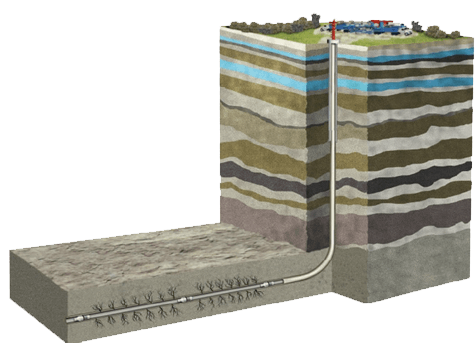Acid fracturing is a process in which acid is injected at a high enough rate and pressure to fracture the formation which is performed above the fracture pressure of the formation. A viscous pad (a fracturing fluid that does not contain proppant) is pumped into the formation at pressures above the fracture-initiation pressure, which fractures the rock. Then an acid stage is pumped to etch the fracture surfaces. The acid also creates conductive wormholes at or near the fracture surfaces. After stimulation, the fracture closes, but the increased conductivity between the formation and the well remains because of the etching and the creation of wormholes. This results in an uneven etching pattern which increases flow capacity to the wellbore and provides a higher PI.
There are two main reasons for performing this type of stimulation treatment:
First and foremost is low permeability, where natural production is not economical; a conductive fracture provides much more flow area for produced fluid or gas.
The second reason is to overcome damage that extends deeper than matrix acidizing can effectively reach.

To reduce or prevent leakoff (loss of treatment fluids to the formation), conventional acid fracturing treatments use multiple stages of injection of nonreactive fluids and acids. This is designed to minimize the leakoff by increasing the fluid viscosity. In addition, by use of mechanical isolation downhole tools, the pay zone is usually divided to several zones of target and acid injection is to be conducted on each zone separately. This helps to have higher conductive fractures created and leads to a better productivity index for producing wells.
Top Select stimulation team has successfully fractured above 450 wells of different type of reservoirs around the world. We appreciate the opportunity to provide you with technical proposal and looks forward to being of service to you.